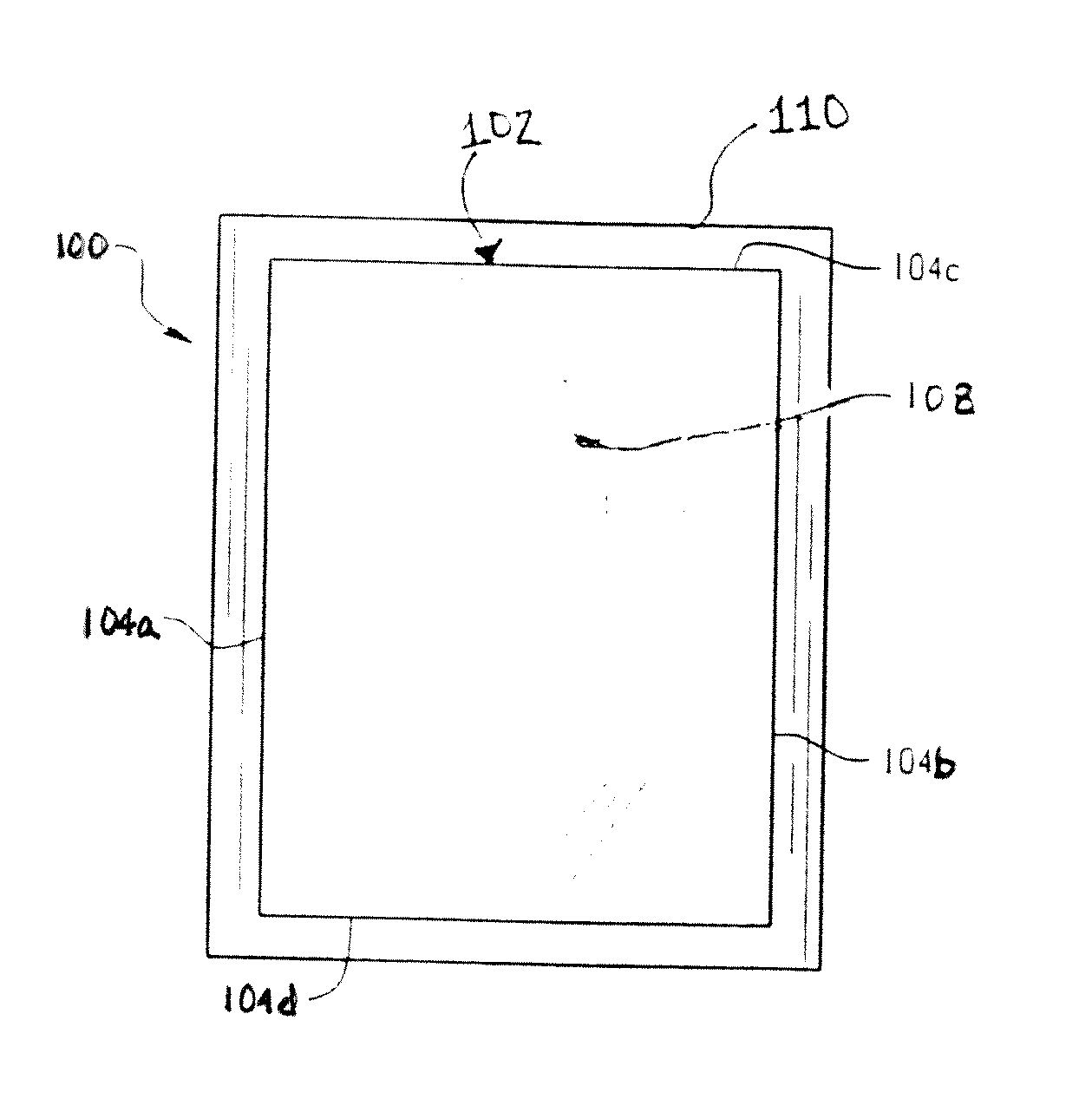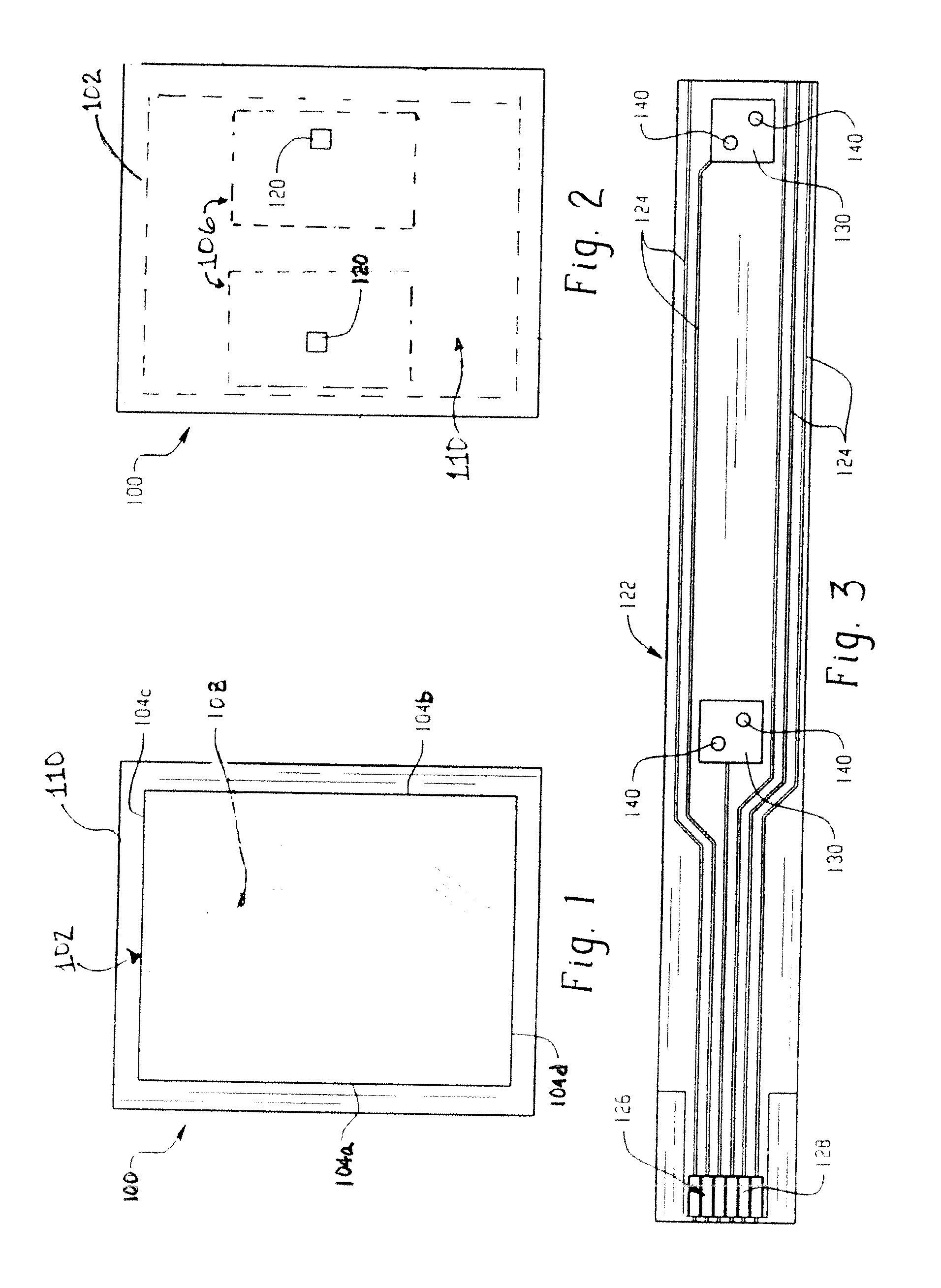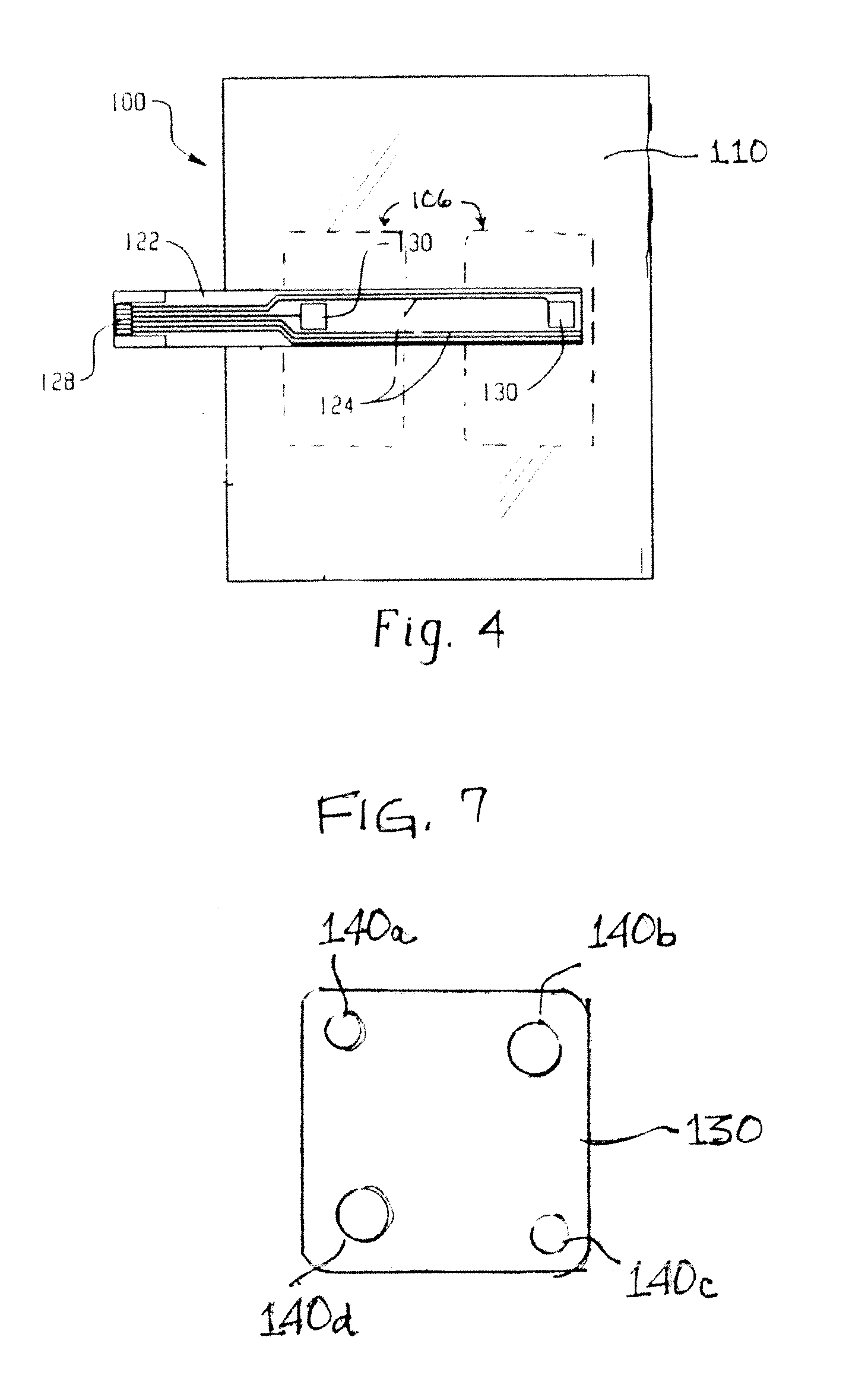Low temperature contact structure for flexible solid state device
a solid-state device, low-temperature technology, applied in semiconductor devices, lighting and heating apparatus, instruments, etc., can solve the problems of long manufacturing time, shorten the useful life of the device, and difficult to provide a reliable electrical connection, so as to achieve convenient and reliable electrical connection, maintain flexibility, and simplify manufacturing
- Summary
- Abstract
- Description
- Claims
- Application Information
AI Technical Summary
Benefits of technology
Problems solved by technology
Method used
Image
Examples
example 1
Low Temperature Solder Process
[0052]This Example may be understood best with reference to FIG. 10 providing an exploded view of one embodiment of a finished device in accord herewith. In particular, this process demonstrates the use of low temperature solder 160 to connect a flat flex cable 122 to patch 106 of lighting assembly 100. In this example, two different low temperature solder compositions were obtained from Indium Corporation. The first was an alloy of In(51)-Bi(32.5)-Sn(16.5), having a liquidus temperature (melting point) of 61° C., and the second was an alloy having the composition Bi(57)-In(26)-Sn(17), with a liquidus temperature of 79° C. The patch material comprised hot tin dipped copper, available commercially from All Foils, Inc., cut to 30 mm×60 mm dimensions and rendered burr-free. The flat flex cable included tin coated copper connection pads, generally in accord with that shown in FIG. 5. Other materials included flux, commercially available from Indium Corporat...
PUM
 Login to View More
Login to View More Abstract
Description
Claims
Application Information
 Login to View More
Login to View More - R&D
- Intellectual Property
- Life Sciences
- Materials
- Tech Scout
- Unparalleled Data Quality
- Higher Quality Content
- 60% Fewer Hallucinations
Browse by: Latest US Patents, China's latest patents, Technical Efficacy Thesaurus, Application Domain, Technology Topic, Popular Technical Reports.
© 2025 PatSnap. All rights reserved.Legal|Privacy policy|Modern Slavery Act Transparency Statement|Sitemap|About US| Contact US: help@patsnap.com



